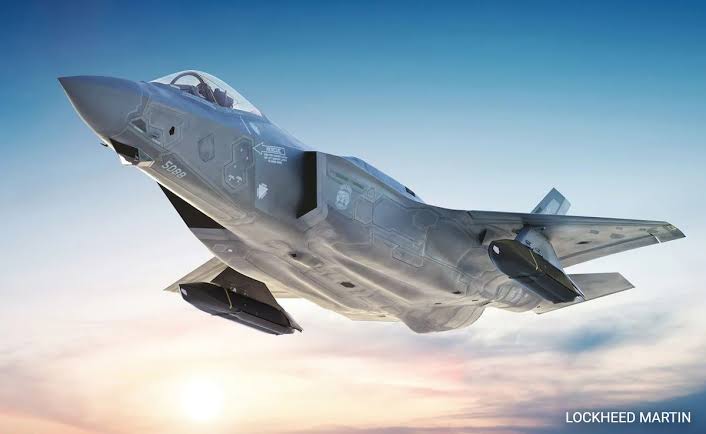Was Brit f35 trying to play a “Great Game” with IAF? anyway both China and USA in for a shock

Ships from the Worlds 7th most powerful the UK Navy, recently participated in a Joint Passage Exercise (PASSEX) in the North Arabian Sea with the Indian Navy, the fourth most powerful.
This exercise took place on June 9th and 10th, 2025, involving anti-submarine operations, tactical manoeuvres, and helicopter operations.
The PASSEX is part of the broader India-UK Comprehensive Strategic Partnership and the India -UK 2030 Roadmap, aiming to enhance maritime security and cooperation. Such exercise support India ‘s SAGAR (Security & Growth for All in the Region) Vision.
The exercise included our Russian made stealth frigate INS Tabar, a French designed submarine, and an American made P-8I maritime patrol aircraft, alongside the UK’s aircraft carrier HMS Prince of Wales and HMS Richmond a type 23 frigate.
The Carrier has two F-35 squadrons embarked. We 809 Naval Air Squadron (NAS) “Immortals” and 617 Squadron with the deployment aiming at achieving full operating capability for the UK F-35B fleet. The Carrier Strike Group is on its way to an Indo Pacific deployment.
The F-35Bs are notable for their stealth features, also short take-off and vertical landing (STOVL) capabilities, allowing it to operate from carriers without catapult systems. Despite these advanced features, the aircraft is still subject to operational limitations imposed by weather and technical reliability.
Four days after PASSEX ended, on night of 14 June the IACCS (Integrated Air Command and Control System) of the Southern Command of the IAF detected, tracked, an unidentified aircraft as it approached Indian airspace from the sea wards side.
IACCS’s a sophisticated network of radars, sensors, and command centres, not only detected this stealth fighter at quite a distance but also successfully identified it as an F35B. A Sukhoi 3o MKI was immediately scrambled to intercept the aircraft.
The pilot then came on International Emergency Frequency, reported critically low fuel emergency and requested permission to land at Thiruvananthapuram International airport.
The IAF then cleared the aircraft for recovery, coordinated with airport authorities, and provided all necessary support for the jet’s safe landing, technical inspection, and eventual return.
It has transpired that emergency was triggered by adverse weather conditions leading to low fuel that prevented the jet from safely returning to its carrier, prompting the pilot to request diversion to the pre-designated emergency airfield in India.
The Western World is in a fresh shock. Earlier during Balakote episode they were unable to fathom why all AAM120 fired by PAF F16s had ended as duds and then everyone saw the same happening with Chinese supplied P15 missiles during Operation Sindoor. Now comes the easy detection of the most stealthy fifth generation F35.
The detection of the F-35B—a fifth-generation, stealth-capable aircraft designed to evade most radar systems— has sparked significant discussion internationally. The F-35B’s low-observable design and minimal radar cross-section (RCS) are intended to make it extremely difficult to detect using conventional radar technology.
The IAF’s public statement that it had “detected and identified” the jet in real time led to speculation about whether India had achieved a technological breakthrough in tracking stealth aircraft.
As a logical cover up, it is rightly said that during peacetime operations, especially in foreign or neutral airspace, F-35s typically fly with Luneburg lenses installed—detachable radar reflectors that deliberately increase the aircraft’s radar visibility.
This practice ensures that friendly and civilian radar systems can track the jet easily, reducing the risk of misidentification or airspace incidents. It is standard procedure for such flights, particularly during ferry, training, or emergency operations.
Multiple sources indicate that the F-35B was likely broadcasting its presence and using such reflectors, making detection by the IAF’s air defence network routine rather than extraordinary.
So far so good except that the Brits had already finished the training with Indian Navy and were operating on their own, away from Indian Air defence Zone. It could have headed for Diego Garcia, though exact position of aircraft is not known when the emergency occurred.
As for the low fuel, well the required fuel is fully calculated for every mission. So may be the aircraft could not land on the carrier due to bad weather. Well weather too is easily forecasted and planning done accordingly prior to the mission !
The IAF’s IACCS is a state-of-the-art, nationwide air surveillance and command system, integrating ground-based radars, airborne warning and control systems (AWACS), satellite feeds, and advanced data fusion.
The system has been significantly upgraded in recent years to address the growing presence of stealth-capable platforms in the region.
So was this F35 B sortue planned with sole intention of probing the capabilities of IAF detection capabilities and reaction ?
Just cannot be ruled out as Britts are experts in playing the GREAT GAME. Also everyone has come to know the Indian IACCS capabilities on the Western front. Now they want to test our “eyes and ears” awareness on the Southern Front.
While the IAF’s prompt detection and handling of the British F-35B demonstrates the effectiveness and readiness of India’s air defence infrastructure, we have not claimed that India has “cracked the stealth code” or achieved a technological leap in tracking stealth aircraft under combat conditions.
In a similar manner we have never claimed that PLAAF J20s could be detected while flying well within Indo Tibetan borders.
The circumstances of the emergency—routine peacetime procedures, use of radar reflectors, and coordinated communication—perhaps were the primary reasons for the successful detection and identification of the jet.
The incident does, however, highlight IAF’s growing capabilities in airspace monitoring and rapid response, reinforcing the credibility of its integrated air defence network.
The incident also tells us that we better have a fighter squadron each along with Kusha / S400 air defences guarding approaches towards Bengaluru from Mangalore – Kochi side, Kochi- Triruvananthapuram side and Trinuveli-Rameshwaram side.
It is intriguing that British F-35B Lightning-II stealth fighter jet, operating from the UK’s aircraft carrier HMS Prince of Wales is still grounded at Thiruvananthapuram International Airport in Kerala for over 48 hours following an emergency landing on Sunday morning.
The F-35B, the world’s most expensive and advanced fifth-generation fighter aircraft, was forced to divert to Thiruvananthapuram after several unsuccessful attempts to recover onto the carrier.
The pilot requested and received permission to land at the airport, where the Indian Air Force (IAF) and airport authorities facilitated a safe landing and provided immediate support.
The IAF described the diversion as a “normal occurrence” and emphasized its role in ensuring flight safety and coordinating with all relevant agencies.
After landing, a technical fault was discovered in the jet’s hydraulic system, which has prevented its immediate return to the HMS Prince of Wales, now anchored approximately 100 nautical miles off the Indian coast.
The Royal Air Force (RAF) and a team of technicians have been working to rectify the issue, but repairs have so far been unsuccessful. The original pilot was relieved and replaced by another, with Indian authorities providing necessary accommodations and logistical support.
The grounding of a foreign fifth-generation stealth fighter for such an extended period on Indian soil is rare, especially given the F-35 program’s status as the most expensive and widely deployed modern combat aircraft.
However it also highlights the robust cooperation between the Indian and British armed forces in managing such emergencies.
Let’s hope that no GREAT GAME was involved in this incident.




